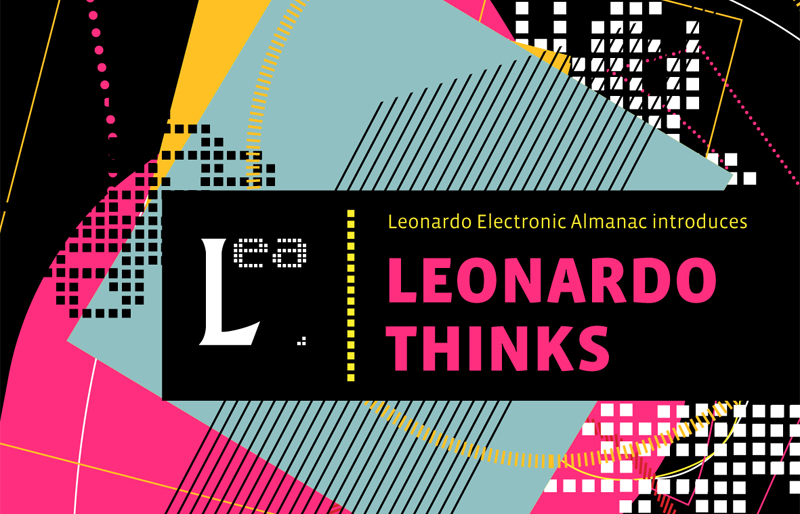
LEONARDO THINKS 1968 – 2011
Contemporary Opinion by Jacques Mandelbrojt
Jacques Mandelbrojt looks at how the concept of fractals, invented by Benoit Mandelbrot, unites and gives a solid mathematical framework to ideas of artists, scientists and philosophers of art sometimes felt more or less clearly.
Fractals in Art, Science and Technology
Benoit Mandelbrot French and American mathematician who just passed away, was born in Warsaw in 1924. In 1936 he and his family fled the Nazis and joined in France his uncle Szolem Mandelbrojt, professor of mathematics at Collège de France. After going to Ecole Polytechnique, he did linguistics and proved the Zipf law. He was an extremely original scientist who with the invention of fractals created a new concept which has applications in numerous fields of science and art. His unconventional approach was well accepted when he came to IBM. He was also professor at Yale University. He published in 1981 an article in Leonardo [1].
The concept of fractals unites and gives a solid mathematical framework, as he liked to emphasize, to ideas which artists, scientists and philosophers of art sometimes felt more or less clearly.
Let me start with this striking quotation from Eugene Delacroix’s Journal in 1857 [2]:
” Swedenborg asserts in his theory of nature, that each of our organs is made up of similar parts, thus our lungs are made up of several minute lungs, our liver is made up of small livers…. Without being such a great observer of nature I realized this long time ago: I often said that each branch of a tree is a complete small tree, that fragments of rocks are similar to the big rock itself, that each particle of earth is similar to a big heap of earth. I am convinced that we could find many such similarities. A feather is made up of million of small feathers…”
This description by Delacroix corresponds to what will become clearly defined with fractals.
Maybe we could assert that most natural shapes are fractals contrarily to shapes corresponding to man made objects, so that fractals can be considered as a way of freely escaping from artificial constraints of Euclidian shapes. I heard recently someone suggesting that fractal shapes in animals are inside their bodies. I would say that animals have inside fractal shapes whereas trees for instance have outside fractal shapes, because the first ones interact with the outside world with their inside shapes to breathe with their lungs, whereas trees breathe with their outside shapes, and the interaction surface is larger when it is fractal.
A simple usual plane curve looks straighter and straighter as you approach it. Other more complicated curves look the same from very close or from afar, this is called self-similarity, and it corresponds to fractal curves, an example being the coast of Brittany. These curves are very complex looking and their degree of complexity is defined by their fractal dimension which would be 1 as the traditional dimension for simple curves and be between 1 and 2 for more complex curves
Concerning art, René Huyghe in his book “Formes et Forces” [3] (Shapes and Forces) makes a distinction between art based on shapes, actually shapes which can be described by Euclidian geometry such as are encountered in Classical art, and art like Baroque art based on the action of forces, for instance shapes which are encountered in waves, in tourbillions etc. We could now assert that both Classical and Baroque art can be described geometrically, the first one by Euclidian geometry, the second one by fractal geometry.
In sciences, ranging from physics at all scales to economics; fractals give new insights and give a suitable framework to chaos or to phenomena which were outside the mainstream of science due to their complexity.
Concerning technology Benoit Mandelbrot was the first one to be surprised when he saw weird and complex shapes appear on his computer screen resulting from an equation. This was to lead to the Mandelbrot set and is the origin of fractal art, a main branch of computer art.
Fractals can subconsciously suggest that each of us is a microcosm, an image of the whole world, hence their strong appeal.
Endnotes
[1] B. Mandelbrot, “Scalebound or scaling shapes: A useful distinction in the visual arts and in the natural sciences,” Leonardo, no. 14 (1981): 43-45.
[2] E. Delacroix, Journal (Paris: Plon, 1986).
[3] R. Huyghe, Formes et Forces (Paris: Flammarion, 1971).
Jacques Mandelbrojt is an artist and theoretical physicist. His web page is http://www.mandelbrojt.com/.
ISSN No: 1071-4391
Author: Jacques Mandelbrojt, Honorary Editor,
E-mail: jmandelbrojt@wanadoo.fr
Leonardo Thinks contribution
http://www.diatrope.com/rfm/docs/fractals.doc
Leonardo is a registered trademark of the ISAST.
